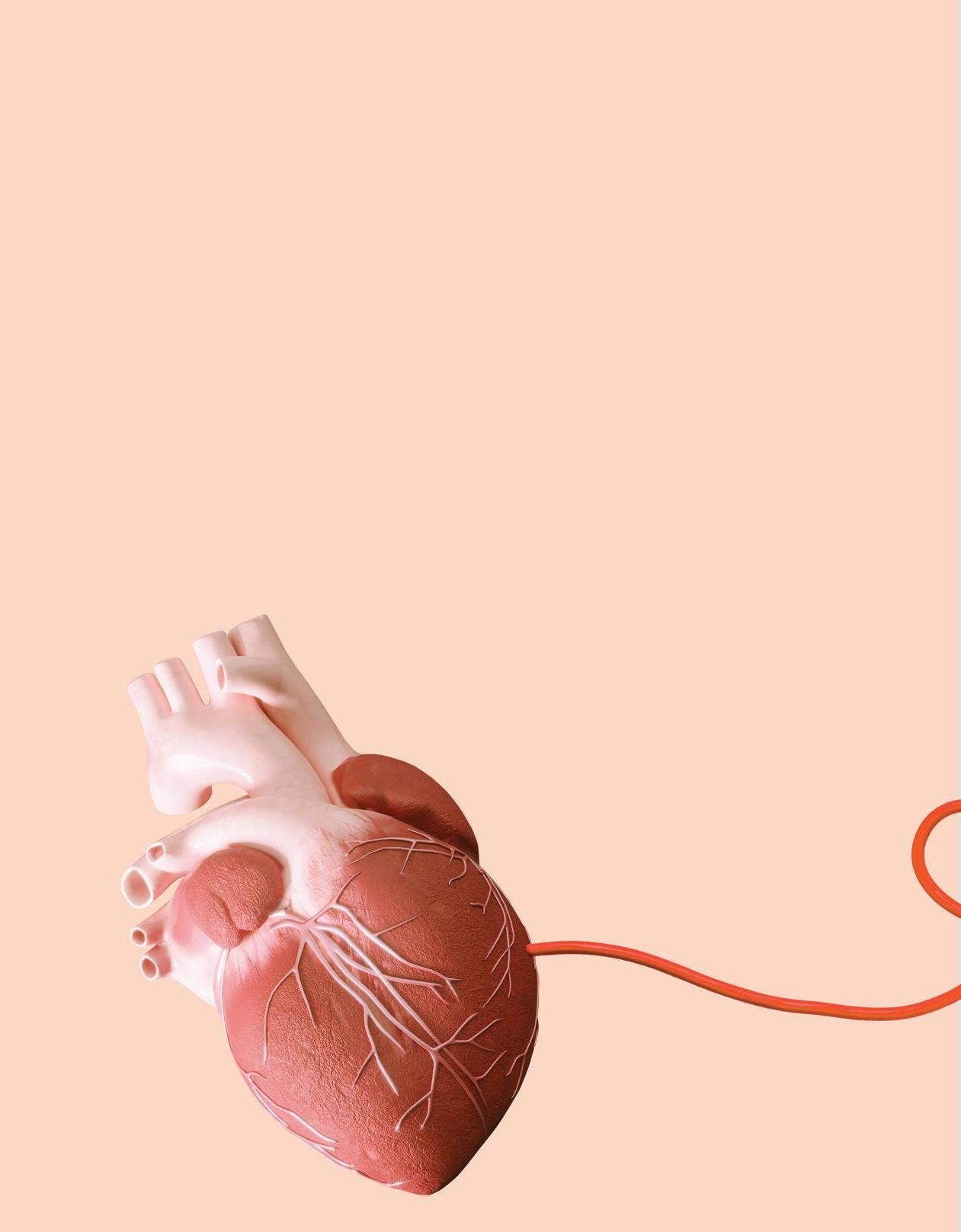
6 minute read
MAKING THE CONNECTION BETWEEN HEAD AND HEART
By Dr. Alwyn Wong, BSc, DC, ART, Med.Ac.
Making the Connection Between
Head & Heart
As firefighters, we know what we have to do in order to live a healthier lifestyle. But it's hard not to order the cheeseburger and fries at the restaurant, or have a cigarette at that weekend party. When we do these things, we feel gratified or relieved, so how do we really get the body to listen to the head and stop behaviors that can be so detrimental to our overall health?
Is the reward really worth the risk?
When our body is already in a high free radical zone, why would we introduce even more toxins and harmful ingredients? How do we
make sense of this?
Let’s start with some psychological discoveries. According to Chip and Dan Heath, authors of “Switch: How to Change When the Change is Hard”,
OUR MINDS ARE RULED BY TWO DIFFERENT SYSTEMS: THE LOGICAL OR RATIONAL MIND AND THE EMOTIONAL OR IMPULSIVE MIND. THESE SYSTEMS ARE IN A CONSTANT BATTLE THAT ULTIMATELY DETERMINES OUR BEHAVIOUR.
Let’s call the rational mind the head and the emotional mind the heart.
At the center of our impulsive nature is the craving for immediate pleasure or the avoidance of pain. The stimulation of our taste buds and the feeling of gratification brought on by each bite of that charbroiled hamburger, topped with all the fixings, gives us immediate pleasure. The euphoria from taking a drag of a cigarette, or from that second or third beer after a stressful day at work, can do wonders to numb pain, whether emotional or psychological.

But too many cheeseburgers and, frankly, any smoking at all can not only prevent us from achieving our fitness goals, but also actually make us unhealthy. counterparts. Where the difference lies is that the heart deals with the immediate, while the head appreciates long-term consequences.
THE KEY IS FINDING A BALANCE BETWEEN SATISFYING THOSE SHORT-TERM CRAVINGS AND ACHIEVING LONG-TERM GOALS.
The first step in aligning our hearts and heads is to acknowledge the heart. Understanding your specific impulses, in the form of “bad” habits, is the first actionable step. Once you’ve identified your challenging impulses, give some serious thought to why you give in. Then, accept those reasons.
Our rational mind is painfully aware of this. Aligning our head
and our heart doesn’t mean
we have to ignore impulses. In fact, these impulses are just as important as their logical
GIVING IN TO IMPULSES IS NOT ALWAYS BAD. IN FACT, GIVING IN TO AN IMPULSE MAY BE NECESSARY TO OVERCOME IT.
Here’s where it gets tricky. Giving into our impulses may prevent us from reaching our health goals. Too many cheeseburgers or beers can lead to obesity and an array of other preventable conditions. Succumbing to these impulses can also prevent us from engaging in health-promoting behaviours. That cheeseburger replaces the grilled salmon. The fries with gravy act as a substitute for vegetables. Sitting in front of the TV for a Netflix marathon takes time away from the gym or a walk with your family.
Let’s now tackle the logical mind. It’s 2022, so a lack of
information is no longer what’s preventing us from becoming healthier.
In fact, we have access to more fitness and health resources than at any other time in history! Sure, new research is always emerging, but for the most part, we know what we should be doing. Drink more water. Get more sleep. Move daily. Eat more vegetables. Cut out processed foods. Avoid excess alcohol. Don’t smoke.
We’ve heard it all before and we know what’s good for us.
So why can’t we change? Why can’t we align our head and our heart?
Using logic will be only partially effective and only for so long. Knowing that eight hours of sleep can prevent aging can encourage us to focus on improving our sleep habits; however, staying up to watch our favorite show or check our phones might still leave us with only six hours of sleep. And even a thorough understanding of the benefits of weight training will keep you engaged for only so long if you don’t enjoy it.
Can we tie this all together? Rather than using logic and science to increase adherence to good habits, let’s instead restructure our lives to avoid negative impulses all together. Well...at least, as much as we can.
Even when we’re developing good habits, relying too much on willpower and logic can cause
fatigue to set in. That’s when our impulses take over. Our desire for immediate gratification or reduction of pain can override our good habits.
Start by listing three personal and non-negotiatiable
reasons for changing your behavior. Some reasons might include your wanting to avoid a disease that’s in your family. Or to look good at your daughter’s wedding. Or stay fit so you are an asset, not a liability, to your team members. Next, form a habit that you’ll protect at all costs. Habits are simply behaviours that are on autopilot thanks to changes occurring within our brains. Our brain affects our behaviour, but our behaviour also affects our brain.
Focus on just one new behaviour and tie it to an
already existing habit. For example, drink two big glasses of water with every meal in lieu of alcohol or a sugary beverage. Go to bed at 11 p.m. (unless you’re on a shift) every night. No matter what. If something doesn’t get done, do it the next day. Finally, engage in 30 minutes of any physical activity you like every day. Take a walk. Do a workout. Play with your kids. The activity doesn’t matter but doing it does. How do we prevent our impulses from taking over? Putting up barriers to our impulses is the first step. Carve out the path that makes engaging in healthy habits easy and bad habits difficult. One practical example is to make a
WE’VE HEARD IT ALL shopping list for the healthy foods that you know should
BEFORE AND WE KNOW be eating. Avoid buying junk food so it simply won’t be in WHAT’S GOOD FOR US. SO your cupboards when the WHY CAN’T WE CHANGE? impulse hits. WHY CAN’T WE ALIGN OUR Reward yourself for meeting your goals. Something
HEAD AND OUR HEART? as simple as checking off a daily checklist can trigger the reward centers that are associated
with pleasure. Use this reward system for both process and performance-based goals. What’s the difference? A process-based goal might be walking for 30 minutes each day, or getting to bed by 11 p.m. A performance-based goal might be increasing the distance walked or losing those ten extra pounds. Rewarding yourself taps into the pleasure centers that drive your impulsive nature.
Once these behaviours are actual habits and are
on autopilot, incorporate something new. For example, once your water consumption habit is established, add a handful of vegetables with every meal. Increase the intensity or duration of your physical activity.
The most effective way of aligning your heart with your head is understanding how both sides of our
behavioural coin work. Once fatigue or the sense of being overwhelmed sets in, we’re much more likely to succumb to our “heart” impulses. Instead, let logic help you to form habits that will make healthy behaviours not only automatic but also satisfying!













